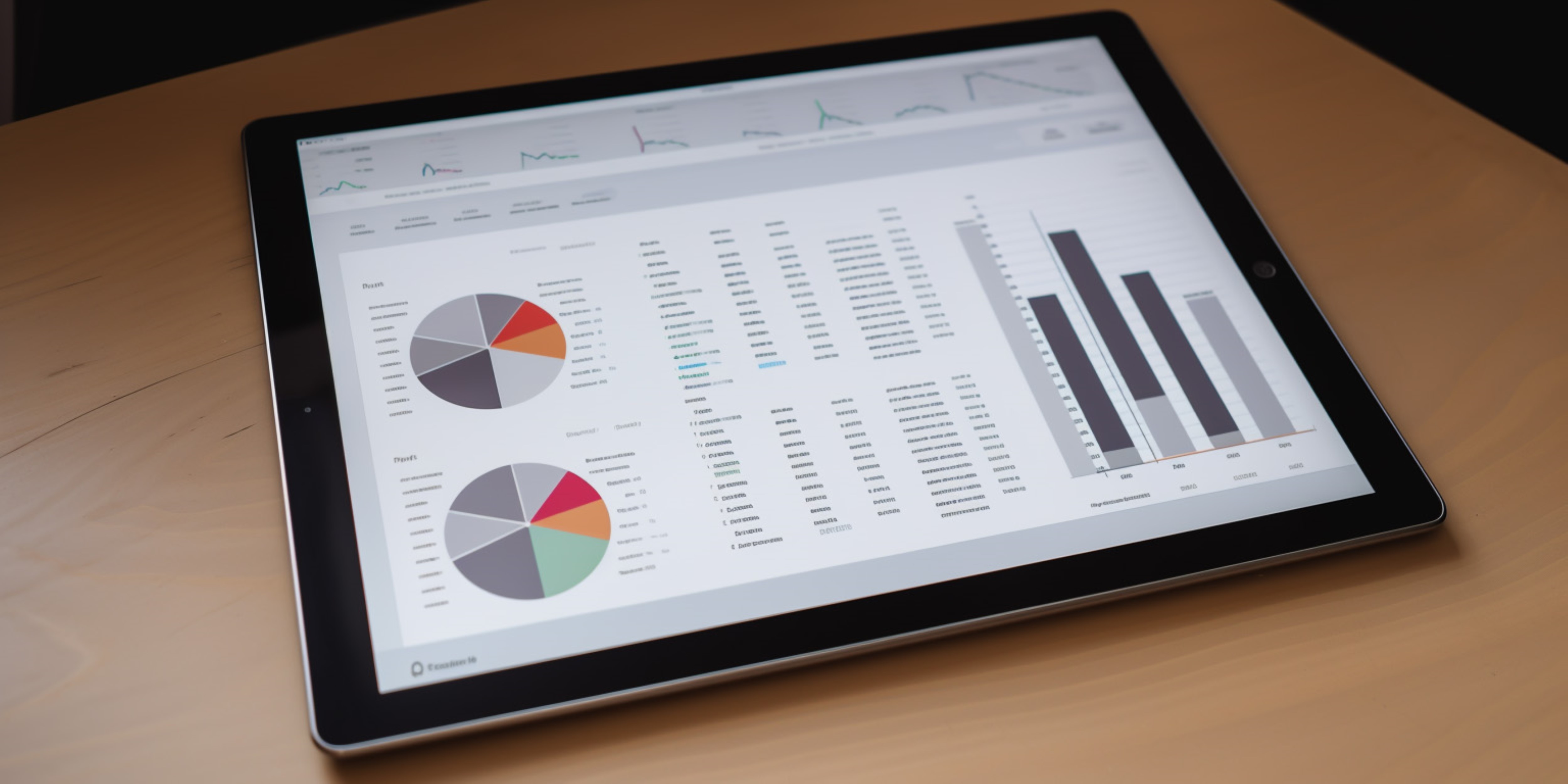From numbers to insights: staying ahead with CFO dashboards


Book a free consultation now!
"Sarah, we have a problem." The voice on the other end of the 3:17 AM call belonged to Marcus, head of operations. "The bank just rejected our payroll transfer. They're saying we don't have sufficient funds."
Impossible. Sarah Martinez, the company's CFO, had reviewed the cash position just two weeks ago—they had a comfortable buffer, or so she thought. She reached for her laptop in the dark and started connecting the dots: early vendor payments, delayed customer collections, unexpected repairs that never reached her desk.
By sunrise, Sarah was surrounded by spreadsheets, piecing together a financial puzzle. In that moment she understood that having good financial data was not enough. Having it when it mattered—before the crisis, not after—was everything.
What Sarah needed was CFO dashboards that worked as her mission control center.
What is a CFO dashboard?
Until recently, financial teams operated in a frustrating cycle of delayed discovery. The monthly close process stretched 15 days or more, meaning CFOs only learned what happened in March sometime in mid-April. They found themselves making critical decisions based on outdated information.
This is exactly why best financial dashboards revolutionized financial management. A CFO dashboard is a centralized digital interface that consolidates critical financial data from multiple sources into real-time visual displays, enabling chief financial officers to monitor company performance at a glance. If one image is worth a thousand words, then one business dashboard is worth a thousand data points—transforming scattered financial information into immediate, actionable insights through interactive charts, graphs and key performance indicators.
Unlike traditional financial reports that provide static historical snapshots, CFO dashboards offer live connectivity to enterprise systems like ERP, CRM and accounting platforms, automatically updating metrics as business transactions occur. This real-time capability allows CFOs to track cash flow, revenue trends, expense patterns and profitability metrics without waiting for monthly closes or manual report compilation.
Key advantages of CFO dashboards
CFO dashboards provide measurable operational and strategic benefits that directly impact financial performance and decision-making efficiency. Here are some core advantages:
Real-time data access
CFO dashboards eliminate reporting delays by connecting directly to live data sources. Financial metrics update automatically throughout the day, providing current cash positions, revenue tracking and expense monitoring. This immediate access to information enables faster response times to market changes and operational issues.
Enhanced forecasting accuracy
Business dashboards integrate historical data with current trends to improve financial projections. Automated algorithms identify patterns in revenue cycles, seasonal variations and expense trends that manual analysis often misses. Companies using predictive analytics in financial planning typically achieve 15-20% better forecast accuracy compared to traditional methods.
Reduced manual reporting time
Automated data collection and report generation can reduce monthly financial close processes from weeks to days. CFOs report saving 40-60% of time previously spent on manual data compilation and validation. This efficiency gain allows finance teams to focus on analysis and strategic planning rather than data processing, making CFO report generation significantly more efficient.
Streamlined compliance and audit processes
Dashboards maintain automatic audit trails and ensure consistent data across all reports. Regulatory compliance becomes more manageable with standardized reporting templates and automated controls. Companies report reducing audit preparation time by 30-50% when using integrated dashboard systems.
Cross-functional financial visibility
Dashboards provide department heads with relevant financial metrics tied to their operations. Sales teams can see how pipeline changes affect cash flow forecasts, while operations can track how efficiency improvements impact margins. This transparency leads to more financially-informed decisions across departments.
Faster strategic decision-making
Last but not least, scenario modeling and what-if analysis tools enable rapid evaluation of strategic options. CFOs can assess potential acquisitions, market expansions or cost reduction initiatives using current data rather than outdated reports. Decision cycles that previously took weeks for financial analysis can now be completed in hours or days.
The psychology behind financial visualization
While CFOs often prioritize data accuracy and functionality in dashboards, the visual and psychological aspects are just as critical. The human brain processes visuals around 60,000 times faster than text, making design a key factor in financial decision-making. Charts, graphs and color-coded indicators help executives spot trends and anomalies in seconds—insights that could take hours to find in spreadsheets.
Color psychology enhances this effectiveness: red signals urgency, ideal for problem areas; green suggests stability and positive performance. Strategic use of white space avoids cognitive overload and placing KPIs in the upper-left quadrant aligns with natural reading patterns for maximum impact.
Well-designed dashboards simplify complexity by using visual metaphors—like waterfall charts or correlation matrices—to show relationships between revenue, costs and profitability.
10 key CFO dashboard metrics
Effective CFO dashboard metrics are built around financial indicators that provide comprehensive visibility into organizational health and performance.
1. Cash flow position
CFO dashboards provide up-to-the-minute cash balance across all accounts with daily inflows and outflows, including short-term cash forecasting and cash burn rate calculations, allowing finance leaders to spot potential shortfalls weeks before they occur. For example, if the 13-week forecast shows cash reserves dropping below operational requirements due to delayed customer payments, a CFO can immediately initiate collection efforts, arrange additional credit facilities or delay non-critical expenditures to maintain healthy cash flow.
2. Budget vs. actual performance
CFO dashboards provide continuous budget monitoring with an analysis across all expense categories, automatic flagging of significant deviations, year-to-date performance tracking and projected full-year outcomes, allowing finance leaders to identify and address spending variances before they compound into major budget overruns. For instance, if marketing expenses exceed budget in the first quarter due to unexpected campaign costs, a CFO can immediately reforecast the annual impact, reallocate resources from other departments or adjust campaign strategies to stay within overall budget constraints.
3. Revenue run rate
CFO dashboards track monthly recurring revenue (MRR) or annual run rate with growth velocity indicators, revenue trends, seasonal patterns and variance from budget projections, enabling finance leaders to identify growth acceleration or deceleration as it happens rather than waiting for month-end reports. For example, if MRR growth velocity suddenly drops, a CFO can immediately investigate whether this reflects market conditions, competitive pressure or internal execution issues.
4. Gross profit margin
CFO financial dashboard examples provide real-time analysis of product-level and company-wide gross margins with trend analysis, tracking margin compression or expansion and identifying the most profitable revenue streams, allowing finance leaders to detect profitability erosion before it significantly impacts overall performance. If gross margins on a key product line suddenly compress, a CFO can immediately evaluate pricing adjustments, alternative suppliers or cost reduction initiatives.
5. Burn rate and runway
CFO dashboards track monthly cash burn rate and remaining runway continuously with scenario modeling for different growth trajectories and expense levels, enabling finance leaders to make informed decisions about fundraising timing, expense management and strategic investments while ensuring adequate liquidity for operations. This real-time visibility allows CFOs to model various scenarios including best-case and worst-case revenue projections, evaluate the impact of new hires or marketing investments on cash consumption and determine optimal timing for fundraising activities before cash reserves become critically low.
6. Working capital efficiency
CFO dashboards track working capital metrics continuously, including Days Sales Outstanding (DSO), Days Payable Outstanding (DPO) and inventory turnover ratios, monitoring cash conversion cycles and identifying opportunities to optimize working capital and free up trapped cash for growth investments. For example, if DSO increases from 35 to 45 days due to a large customer extending payment terms, a CFO can immediately assess the impact on cash flow, negotiate better terms or adjust credit policies to prevent further deterioration in collection efficiency.
7. Key Performance Indicators (KPIs)
CFO dashboards track industry-specific operational metrics that drive financial performance in real-time, such as customer acquisition cost, lifetime value or unit economics depending on business model, enabling finance leaders to connect business performance directly to financial outcomes and make data-driven investment decisions.
8. Accounts receivable aging
CFO dashboards can track receivables aging in real-time with outstanding invoices categorized by age (30, 60, 90+ days), collection forecasts and identification of potential bad debt risks and collection efficiency trends, enabling finance executives to proactively manage collection risks and optimize cash flow from operations. For instance, if invoices over 90 days increase from 5% to 12% of total receivables, a CFO can immediately escalate collection efforts, implement stricter credit policies or increase bad debt reserves to protect financial statement accuracy and cash flow projections.
9. Expense category analysis
CFO dashboards provide continuous expense monitoring with real-time tracking by department and category, automated approval workflows and identification of spending patterns while flagging unusual transactions for review, allowing finance leaders to control costs proactively, maintain budgetary discipline across all organizational levels and identify unusual spending patterns that might indicate process breakdowns, policy violations or fraudulent activity. This comprehensive expense oversight enables CFOs to enforce spending controls, ensure proper authorization protocols are followed and maintain detailed audit trails that support both internal governance requirements and external compliance obligations.
10. Profitability by business unit
P&L dashboard functionality tracks business unit profitability continuously with segment-level profit and loss dashboard analysis showing contribution margins and allocated costs, enabling finance leaders to optimize resource allocation, identify underperforming segments before they significantly impact overall company performance and make informed decisions about which business units to prioritize. This detailed profit dashboard view allows CFOs to compare performance across different segments, determine where to invest additional resources and identify units that may need operational improvements or strategic changes. The real-time monitoring also helps CFOs make better decisions about cost allocation and ensures that high-performing units receive appropriate support while addressing issues in struggling segments.
Building your financial command center with RST
As a CFO, implementing a complete business intelligence solution with RST transforms how you access, analyze and share financial data across your organization. RST builds your entire data infrastructure from the ground up, using advanced tools to automatically collect and consolidate information from all your business systems—ERP, CRM, databases, files and real-time events. With RST's expertise in advanced analytics, personalized dashboards and automated finance reports, chief officers gain the insights needed for strategic decision-making.
See how your financial intelligence will be structured:
Data sources: The system automatically collects data from all your business systems including CRM, ERP, databases, files and real-time events to ensure complete financial visibility.
Data ingestion: Advanced tools like Fivetran and Airbyte seamlessly move data from all these different sources into one centralized location.
Data cloud (Snowflake): All your data gets organized and stored securely in a centralized cloud warehouse with enterprise-grade controls and proper access permissions.
Data transformation (dbt): dbt cleans and prepares your raw data for analysis while maintaining complete audit trails that satisfy compliance requirements.
Advanced Analytics: Python-based analytics capabilities enabling predictive modeling, forecasting and deep financial analysis when you need it.
Business intelligence (Omni): Intuitive dashboards and reports allow you and your finance team to explore data, create reports and make decisions in real-time, while automated reporting capabilities significantly reduce manual work in financial close processes.
This complete solution transforms financial reporting from a time-consuming burden into a competitive advantage. Contact RST to discover how quickly your end-to-end business intelligence solution can become reality.


